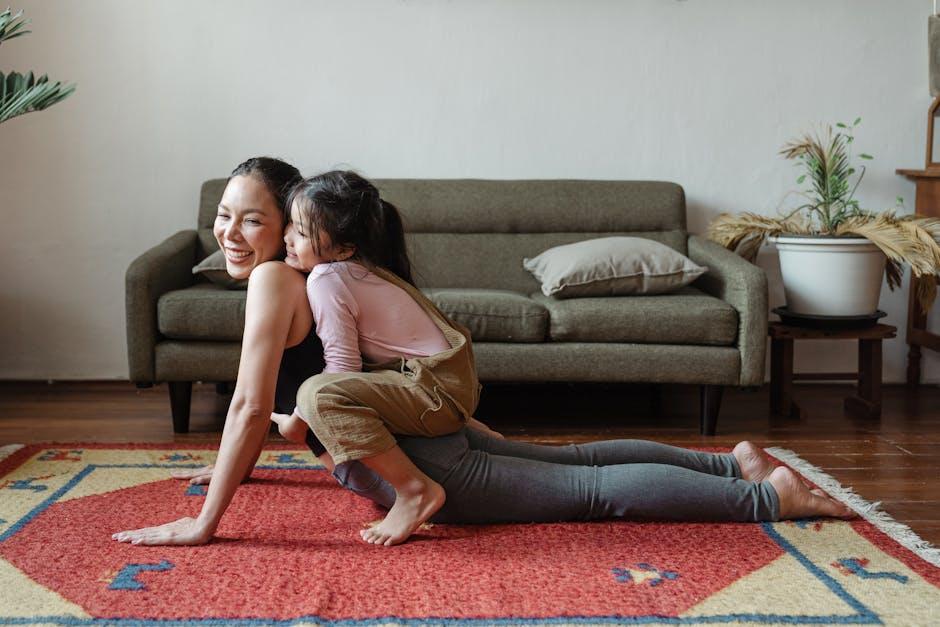In an era characterized by relentless pace and increasing demands, the concept of mindfulness has emerged as a beacon of tranquility and focus. As families navigate the complexities of modern life, integrating mindfulness practices into daily routines offers a promising avenue for enhancing overall well-being. This article delves into the long-term benefits of adopting mindfulness within the family unit, exploring how these practices not only foster individual mental health but also strengthen familial bonds. By analyzing current research and real-world applications, we will illuminate how consistent mindfulness routines can cultivate resilience, emotional intelligence, and harmonious relationships, ultimately preparing families to thrive amidst life’s challenges with renewed clarity and connection.
Enhancing Emotional Well-being Through Mindful Family Practices
Integrating mindfulness into family routines is more than just a passing trend; it offers substantial long-term benefits that foster emotional well-being for every family member. By practicing mindfulness together, families can cultivate a more empathetic and supportive environment. This shared practice enhances communication, reduces stress, and builds resilience against life’s inevitable challenges. Mindfulness helps families develop a deeper understanding of each other, encouraging a harmonious home life where emotions are acknowledged and respected.
Mindful family practices can take various forms, allowing each family to tailor these activities to their unique dynamics. Consider incorporating some of the following techniques into your routine:
- Mindful Eating: Transform mealtime into a sensory experience by focusing on flavors, textures, and the act of eating together.
- Breathing Exercises: Practice simple breathing techniques as a family to promote calmness and focus.
- Gratitude Sharing: Dedicate time each day to express gratitude, helping to foster a positive and appreciative family atmosphere.
- Nature Walks: Engage in mindful walks, paying attention to the sights and sounds of nature to enhance relaxation and presence.
These practices, when consistently integrated into daily life, contribute to a foundation of emotional resilience, enabling families to thrive collectively and individually.

Strengthening Family Bonds with Consistent Mindfulness Integration
Integrating mindfulness into family routines can serve as a cornerstone for nurturing deeper connections and fostering a harmonious home environment. Consistent mindfulness practices help families cultivate patience, enhance emotional resilience, and improve communication skills. As family members learn to be present in the moment, they develop a greater understanding of each other’s needs and emotions, leading to more empathetic interactions.
- Enhanced Emotional Intelligence: Regular mindfulness exercises can heighten awareness of one’s own emotions and those of others, promoting compassionate responses and reducing conflict.
- Improved Focus and Attention: Mindfulness encourages individuals to concentrate on the present, which can lead to better focus during family activities and meaningful conversations.
- Stress Reduction: Families practicing mindfulness together can collectively lower stress levels, creating a calmer and more supportive home atmosphere.
Moreover, these practices are not just a short-term fix but offer profound, long-lasting benefits. Families that engage in mindfulness together often report a stronger sense of unity and shared purpose. This integration acts as a buffer against the chaos of daily life, allowing each member to feel more grounded and connected.
Cultivating Resilience and Stress Management in Family Dynamics
Integrating mindfulness practices into family routines can significantly enhance the quality of family interactions by fostering an environment where emotional resilience and effective stress management are prioritized. This proactive approach encourages family members to become more attuned to their emotions and thoughts, leading to improved communication and understanding. By incorporating mindfulness techniques such as deep breathing exercises, guided meditation, and mindful listening, families can build a strong foundation for managing life’s challenges together.
- Enhanced Emotional Awareness: Mindfulness allows family members to recognize and understand their emotions better, reducing the likelihood of reactive behaviors and promoting thoughtful responses.
- Improved Communication: With a focus on present-moment awareness, families are more likely to engage in active listening and empathetic dialogue, strengthening their bonds.
- Stress Reduction: Regular mindfulness practices help in mitigating stress by teaching individuals to remain calm and centered, even in challenging situations.
- Resilience Building: As family members learn to cope with stress more effectively, they develop resilience, which is crucial for navigating life’s ups and downs.

Practical Strategies for Incorporating Mindfulness into Daily Routines
To seamlessly weave mindfulness into the fabric of family life, consider starting with small, manageable practices that can be easily integrated into existing routines. Mindful mornings can set a positive tone for the day; encourage family members to engage in a few minutes of deep breathing or stretching together. This can be as simple as a brief session of shared silence over breakfast or a quick gratitude circle before heading out the door. Another effective strategy is to create a mindful transition from work or school to home life. Encourage each family member to take a moment to pause and breathe deeply upon entering the house, leaving the stresses of the outside world behind.
Incorporating mindfulness into daily activities can also be achieved through intentional practices during common family interactions. Consider introducing mindful eating during family meals, where everyone takes a moment to appreciate the food, its flavors, and the effort involved in its preparation. Mindful listening is another powerful tool; during family discussions, encourage each person to listen attentively without interrupting, fostering a deeper connection and understanding. For families with children, turning routine activities into mindful games—such as a “quiet game” during car rides or a “senses challenge” during walks—can make mindfulness engaging and fun for all ages.



